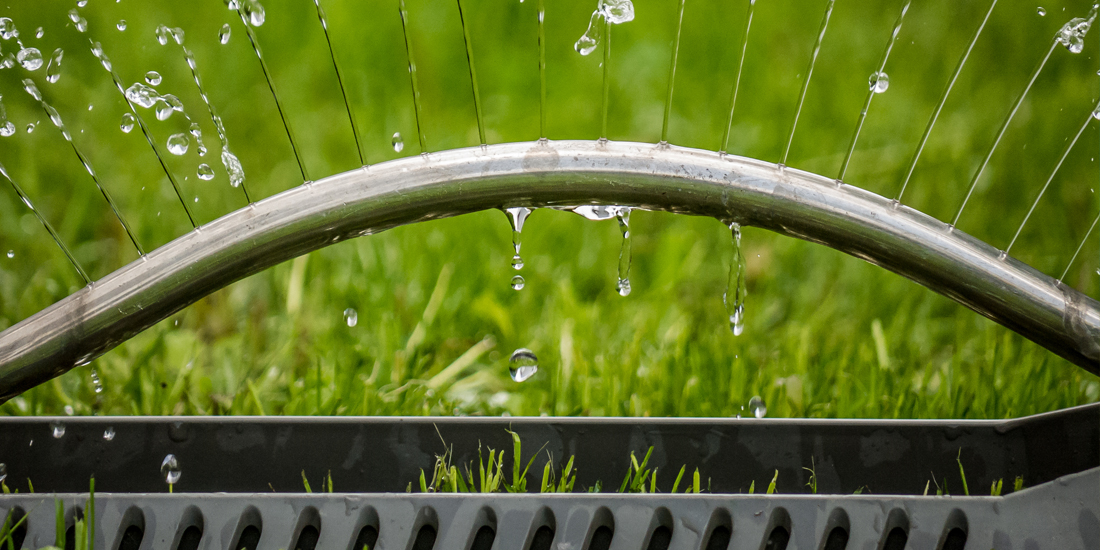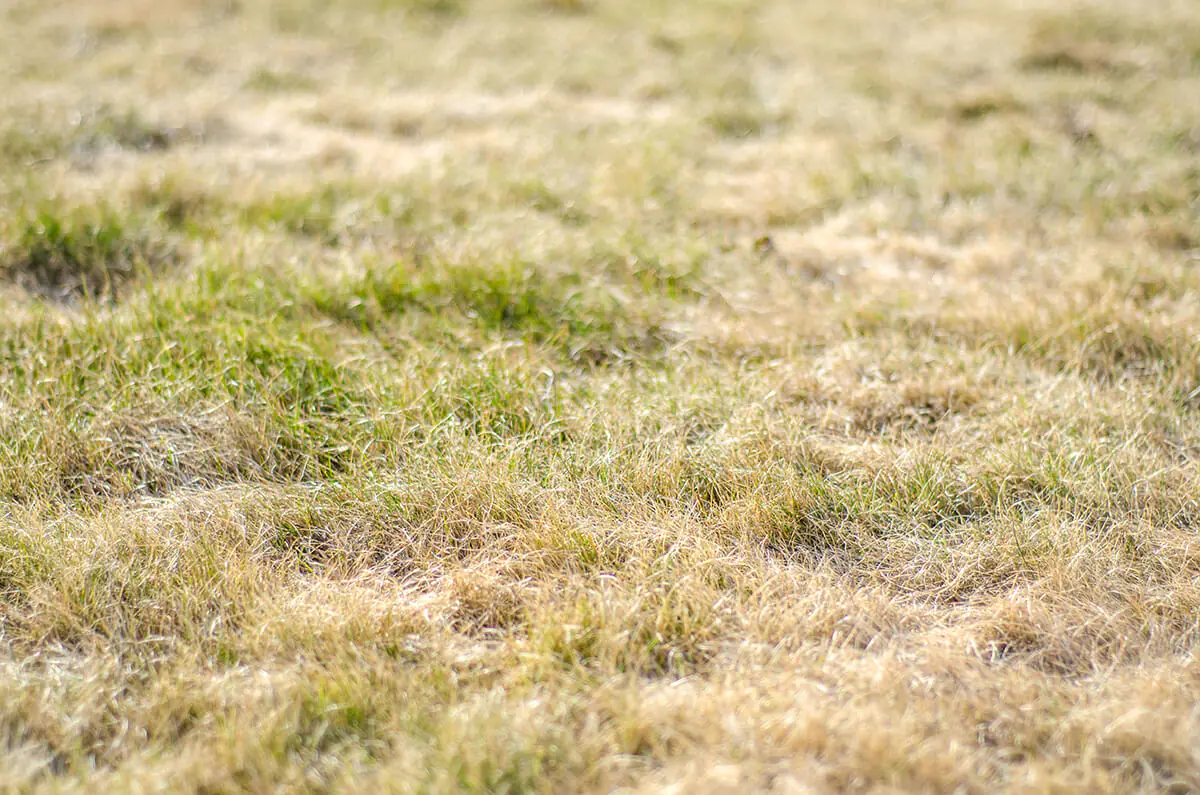How often should I water my lawn in summer?

A UK summer often brings some surprising weather, and the wettest summer on record or the driest summer on record can be just around the corner at any time. With this being the case, it isn't easy to know just how much you should water your lawn, whether new or established. We offer helpful advice below to help answer the common question - "How often should I water my lawn in summer?".
The most obvious indication of whether you’re overwatering your grass seed, or watering too little, will be the condition of your lawn in summer. If your grass is turning dry and yellowing, you are likely not watering frequently enough. But you may be over-watering it if it's flooded, covered in pools of water or bog-like.
So, how much water should I be giving my lawn in summer?
Typically, offering 1-2 inches of water is enough, whether you're tending to new seedlings or a well-rooted lawn. If you notice that your soil or seedlings still look dry after watering in hot spells or your established lawn isn't responding as expected, it might be time to increase your watering frequency.
For your new seedlings, the goal is to keep the soil moist, avoiding saturation. When dealing with an established lawn during dry spells, it's important your lawn gets enough water to maintain its lush green appearance. Neglecting watering during a heatwave will lead to swift and evident consequences – think yellow, straw-like grass blades across your lawn!
Tips for watering a lawn in spring and summer
- When it comes to watering, water well but not too often, the goal is to help those roots grow deep and strong. It's alright to let the grass get a little parched – that actually encourages the roots to dig deeper in search of water.
- Don't go for light sprinkles of water too often. This will give the grass shallow roots, stressing it out when summer is at its hottest. Plus, it's an open invitation for weeds to thrive and will encourage grass diseases to spread.
- Give your lawn a good soak once a week, and you'll want to see some small puddles on the surface to know you're on the right track. But you can leave a gap of a few days if there has been a spell of heavy rainfall.
- Time your watering for late evening or nighttime when things have cooled down. If that doesn't work, early morning watering is just as good.
- And when temperatures are at their hottest, or there's a drought, save your watering for late evening or early morning. Watering when the sun's blazing means most of it will disappear before helping your grass out.
Know when to water grass in the summer months
To prevent the onset of disease, it's essential to avoid having damp grass during the night. To achieve this, water your lawn before the day heats up, allowing ample time for the grass to dry before nightfall. You can water your lawn anytime between early morning and lunchtime or in late afternoon when it's less warm outside.
In cases where your lawn is affected by grass disease, watering can potentially make things worse. Red Thread and Fusarium tend to worsen in wetter conditions, so check out our guide on how to get rid of Red Thread to sort these issues out as soon as you can.
Normal Conditions Watering a Lawn in Summer
(15 degrees and below, with regular rainfall)
Established Lawn (6 months +)
In summer, UK temperatures can range from 15 – 25 degrees. Anything lower than 15 degrees could be described as ‘normal conditions'. Consistent temperatures above this with no rainfall will lead to drought conditions. An established lawn in summer can be watered 2/3 times a week.
New Lawn
If we consider that a minimum of 8-10 degrees are required for most grass species to germinate, then watering once a day in summer for the first 6-8 weeks after sowing should be sufficient.
Aim to water deeply once a day in this time period – ½ inch for clay soils and 1 inch for sandy / loam type (normal) is sufficient.
The first 6-8 weeks of aftercare for a newly sown lawn are critical. Grass seed needs adequate heat, water, and nutrients from the soil to germinate. A lack of any of these requirements can cause delayed germination or failed germination entirely.

Drought Conditions Watering a Lawn in Summer
(15 degrees and above, with irregular / consistently no rainfall)
In drought conditions, lawns can go for weeks without the level of moisture required, and the key to repairing a drought-damaged lawn is to adjust your lawn watering. The water table is essentially where the water goes once it disappears off the surface of your lawn. In normal weather conditions, the water table retains this water keeping your lawn moist and hydrated. But during times of drought, the water table is extremely low since there has been no rainwater to keep it topped up!
In drought conditions, the water your lawn receives is unlikely ever to reach the water table. And since the water table that supplies your lawn is the same as your neighbours, you can see how low it is in your area by simply observing how everyone else’s grass looks in your area.
Established Lawn (6 months +)
The great thing about an established lawn is its ability to bounce back, even after being consistently subjected to dry conditions. The 'Bounce Back' test will help you better understand the condition of your lawn during a drought. If you step on your lawn, and the grass does not rise back into place - then your lawn has failed the 'Bounce Back' test. For an established lawn, you should aim to water infrequently and deeply when the lawn is failing the 'Bounce Back' test. You should follow the below instructions:
- Water between 10 -14 days apart
- Soak the lawn - You should see minor puddles on the surface
- Water the grass during cooler periods - evening or nighttime
- Avoid watering during hot periods of the day – most of the water will evaporate
- With areas of lawn which don’t get much sun – don’t soak them as much
Rainwater is much more nutritious than tap water as it contains higher nitrogen levels, ultimately boosting growth. If you can’t let nature take its course consider getting a watering butt to collect rainwater throughout the year and spread it on the lawn with a watering can when required.
New Lawn
Sowing a new lawn in drought conditions is not ideal, so consider this before sowing grass seed. A new lawn is different from an established lawn in that if the seed is not watered, it will most certainly die in drought conditions as its roots are too shallow. In drought conditions, you should aim to water twice a day and deeply – maintaining ½ inch of water across the surface for clay soils and 1 inch for sandy / loam type (normal) soils. If your soils are particularly dry and the water absorbs quickly, try to water again in the evening when the sun is down.
Flood Conditions
It may be obvious, but if floods occur in summer, you mustn't water your lawn until the flooding subsides. If you are planning to sow a new lawn, make sure to consult a two-week forecast before sowing.
Our detailed guide on grass seed sowing is a useful resource when sowing a new lawn and when overseeding an existing lawn.
We also have a lawn care seasonal checklist that will help you keep your grass healthy, lush and vibrant all year round.
But, if you have any questions relating to your garden lawn, grass seed, or lawn fertiliser or have queries about a unique issue in your yard, please send us a message; we are always happy to help.